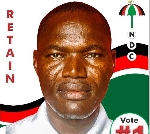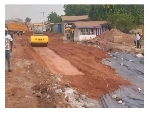What next for government as ‘dumsor’ clock ticks?

Beyond these two power crisis which was largely blamed on act of God, the country had to experience several periods of inadequate power supply, including the 2006 to 2007, and 2012 to 2016 power outages. The uniqueness of the 2012 to 2016 power crisis was the longest period the Ghanaian had to endure, with rotating Load Shedding timetable, which earned the name “Dumsor”.
Up until the 2012 to 2016 power crisis, the major contributing factor to the persistent, irregular, and unpredictable electric power outage had largely been power generation shortfalls. But today, the narratives have changed tremendously.
Today, Ghana can boast of over 4,750 (megawatts) MW of installed generation capacity from largely hydro-electric and thermal sources. Net dependable capacity exceeds 4,320 MW, and the current Peak Demand rarely exceeds 2,700 MW. The country is also significantly endowed with natural gas to fuel the power plants which are largely dual-fuel-fired. And the Volta Lake is currently at a decent level of over 79 meters (79.754m at January 4th 2019) compared to the prior year level of 76 meters (76.557m at January 4th 2018).
In spite of these favourable conditions which are seen as recipe for aggressive and rapid industrialization, the country is still grappling with unreliable power supply. Since November 2018 till now, the country has been experiencing a recurring power outages.
The problems attributed to the recent inconsistent electricity supply are technical, commercial, regulatory, structural, planning, funding, political, and procurement related. However, the most predominant challenge to the provision of reliable electricity supply is the poor financial status of the power utilities which impacts on the ability to procure the required quantity of fuel for power plants in a timely manner, carry out maintenance services to ensure the availability of the required plant capacities, maintain and expand transmission and distribution infrastructure to ensure system efficiency et cetera.
It is the operating revenues, in the form of tariffs and service charges collected by the power utilities, and capital injection from the state as the sole shareholder of the state-owned enterprises (SOEs) in the power sector that yields liquidity for the entire value chain (generation, transmission, and distribution).
However, the financial performance of the state-owned utilities have been abysmal in recent times. At the end of 2018, all SOEs in the power sector reported losses, a clear sign of weak sector performance. The deteriorating financials of these entities makes it difficult for them to operate efficiently, and to guarantee reliable and consistent supply of electricity.
Finance Committee Warns
A report by the Finance Committee of Ghana’s Parliament that was discussed in early July 2019, warned that liquidity challenge in the power sector may spur the return of Dumsor.
According to the legislative committee, Ghana’s energy sector is currently overburdened with growing indebtedness as it battles with a debt portfolio of over US$4billion. In the report it is captured that state-owned Enterprises in the energy sector like Ghana Grid Company (GRIDCo), Power Distribution Services (ECG/PDS) and the Northern Distribution Company (NEDCo) have for the past two and half years all posted a revenue loss of GH¢118million, GH¢2billion and GH¢163.7million respectively. And that the situation is worsened by the government’s indebtedness to Karpower Plant to the tune of US$150million, ENI US$160million, NEDCo US$162million, Independent Power Producers (IPPs) US$1billion, GRIDCO US$171million and Ghana Gas Company US$735billion.
According to the report, the total amount accrued from levies collection for 2018, fell short by 9.2 percent over the projected figure of GH¢3.507 billion due to the significant (65.5 percent) fall in the targeted Price Stabilization and Recovery Levy (PSRL) amount, as well as the fall in the targeted amount set for the Public Lighting Levy (PLL) and National Electrification and Scheme Levy (NESL) by 45.76 percent and 43.69 percent respectively. However, the report concluded that the Energy Debt Recovery Levy (EDRL), Road Fund Levy (RFL), and Energy Fund Levy (EFL) all outperformed their targets by 7.9 percent, 0.72 percent and 7.29 percent respectively, at the end of 2018 based on account of 11.79 percent increase in petroleum products consumption volumes in 2018 compared with the same period in 2017.
The falls were attributed to the reduction in electricity tariffs, change in consumer attitude towards energy conservation, gradual shift towards the consumption of renewable energy such as solar and the lower than estimated recovery of electricity bills.
ESLA Accounts, according to the report, recorded a closing balance of GH¢615,417,858 at the end of 2018. During the period, a total amount of GH¢1,353.71million was transferred to ESLA Plc from ESLA Accounts. This amount, the report observed, excluded GH¢16.33million transferred in December, 2018 and received by ESLA in 2019. And that out of a total amount of GH¢1,353,706,144.00 received by ESLA Plc, an amount of GH¢1,104,334,498.02 was used to pay two coupons held by ESLA Bond holders in May and November, 2018. The balance of GH¢326,697,267.78 was transferred into a LOCKBOX Account.
According to the report, even though an amount of GH¢5,453.20 million out of the total proceeds realized from ESLA Plc Bond was applied to redeem part of the legacy debt of the Energy Sector, substantial portions of the debt still remain on the books of the state-owned Enterprises which continue to accumulate new debts.
IPP’s Threatens
Barely a week after the Finance Committee of Ghana’s Parliament warned that there could be Dumsor due to liquidity challenge in the power sector, six Independent Power Producers (IPPs) which currently supply about 1,500 MW of electricity have threatened to shut down their power plants if Power Distribution Services (PDS) Limited fails to settle debts amounting to over US$700 million within eight working days.
The companies include, Sunon-Asogli Power (Ghana) Limited, BXC Solar Ghana, Cenit Energy Limited, Cenpower Generation Company Limited and Karpowership Ghana Company Limited – are members of the Chamber of Independent Power Producers and Bulk Consumers (CIPDIB).
Even though these IPPs acknowledge the negative impact a shutdown of power plants will have, they claim they are left with no choice since they cannot continue to be saddled with huge debts, while they struggle to pay creditors, suppliers, and employees’ salaries.
According to the IPPs, as at the time the Electricity Company of Ghana (ECG) was taken over by PDS, they were owed over US$400 million. However, the debt has shot to over US$700 million since the PDS took over, suggesting that the PDS has accumulated additional debt of over US$300 million, without a dime paid.
In a statement, the Chief Executive Officer (CEO) of CIPDIB, Mr Elikplim Kwabla Apetorgbor, urged the government, through the Ministry of Energy, to compel PDS to clear the accumulated invoices presented by the IPPs within eight working days, and pay interest on all overdue invoices which the IPPs could have profitably utilized. He charged the Millennium Development Authority (MiDA) to compel PDS to adhere to best business practices and respect the terms of the PPAs and ensure the nation derives the optimum benefit from the concession arrangement.
Mr Apetorgbor stated that following a successful concession, IPPs expected PDS to honour and abide by the terms of the Power Purchase Agreements (PPAs) inherited, particularly by avoiding the delay in paying for power purchases, with respect to the bargained credit days. He regretted that PDS appears to be reliving some of the very bad contractual and business practices that characterized the operations of ECG. He explained that energy can neither be stored nor destroyed, which presupposes that consumers are paying for the power consumed while PDS is accumulating the revenues.
Clock Ticks, What Next?
While the clock ticks, one is left to see how government would reacts to the threat issued by the IPPs to first, forestall any blackout.
It may also be in government’s own interest to investigate the circumstances that might have led to this unfortunate situation, and institute measures to avert the immediate consequences, for it definitely comes as a surprise to Ghanaians that since the takeover of ECG by the PDS four months ago, not a dime have been remitted to the IPPs.
May be, it is about time to take a cue from the Finance Committee of Parliament’s report which discloses that the growing debt portfolio in the energy sector is largely due to the non-adherence to the Energy Sector Levies Act, 2015 (Act 899) as amended in 2017 (Act 946).
Written by Paa Kwasi Anamua Sakyi, for the Institute for Energy Security (IES)
The writer has over 22 years of experience in the technical and management areas of Oil and Gas Management, Banking and Finance, and Mechanical Engineering; working in both the Gold Mining and Oil sector. He is currently working as an Oil Trader, Consultant, and Policy Analyst in the global energy sector. He serves as a resource to many global energy research firms, including Argus Media.
Source: Emmanuel Mensah
Trending News

UE/R NDC comms. bureau suspends party activities to mourn Agorogo
10:17
Ejisu roads see massive overhaul ahead of by-election
09:52
2024 polls: We're on victory path but not won yet – Asiedu Nketia warns NDC against complacency
23:03
Court discharges former PPA boss Adjenim Boateng
11:14
British High Commission donates protective equipment worth £260,000 to GAF
09:12
Stop fighting for positions in next Mahama gov't when we haven't won yet – Asiedu Nketia chastises party capos
23:03
Pension: Public sector workers to strike May 2
10:18
NPP Performance Tracker emphasizes toilets over substantive infrastructure dev’t projects — Dr. Sa-ad Iddrisu
09:00
Ghana's Supreme Court clears way for dual citizens to hold key public positions
20:28
MFC decries NPP's bribery of supporters
10:11



